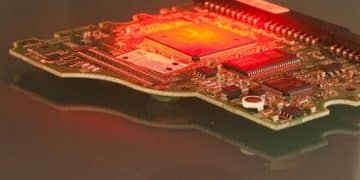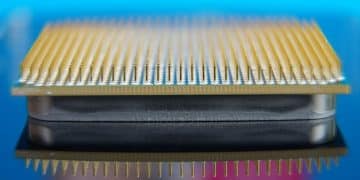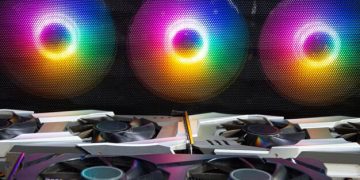Budget-Friendly Gaming Hardware Upgrades for 2025
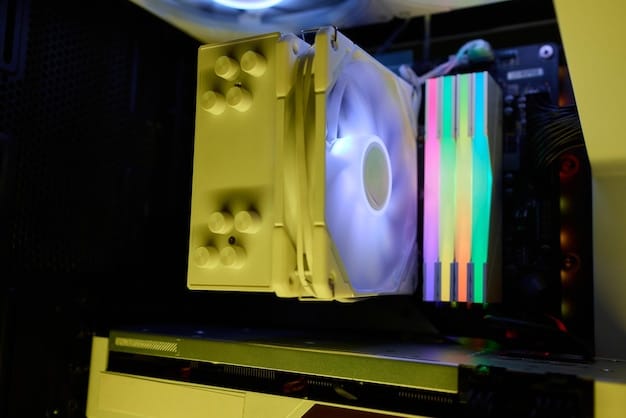
Navigating the gaming hardware market in 2025 doesn’t require breaking the bank; strategic, budget-friendly upgrades can significantly enhance your gaming experience by focusing on key components that deliver the best performance per dollar.
In the dynamic world of PC gaming, the quest for peak performance often feels like an endless race against technological advancements and ever-increasing price tags. However, the pursuit of an immersive and smooth gaming experience doesn’t necessarily demand a bottomless budget. This guide focuses on how to make Don’t Overspend: Budget-Friendly Gaming Hardware Upgrades for 2025 a reality, offering practical advice and specific component recommendations curated to provide significant performance boosts without emptying your wallet.
Strategic Assessment: Understanding Your Current Setup
Before diving into a shopping spree, a comprehensive understanding of your current gaming rig is paramount. This initial assessment serves as your diagnostic, identifying bottlenecks and pinpointing areas where an upgrade will yield the most impactful returns. Many gamers rush to buy the latest and greatest without realizing that their system’s overall performance is only as strong as its weakest link. A budget-friendly approach begins not with buying, but with analyzing.
An effective assessment involves using diagnostic software to monitor your system’s performance during gameplay. Tools like MSI Afterburner, HWiNFO, or even Windows Task Manager can provide invaluable data on CPU utilization, GPU load, RAM usage, and storage speeds. Pay close attention to which component consistently hits 90-100% utilization while others idle. This often indicates a bottleneck. For instance, if your GPU is constantly maxed out while your CPU barely breaks a sweat, a graphics card upgrade is likely the most logical next step. Conversely, if your CPU is struggling, upgrading your processor or even your entire motherboard and CPU platform might be necessary.
Identifying Bottlenecks
Understanding where your system is falling short is the first and most crucial step in any upgrade path. Without this insight, you risk spending money on components that won’t significantly improve your gaming experience. For example, upgrading your RAM from 8GB to 16GB might be a waste if your CPU is struggling to keep up with modern game demands, preventing the system from ever fully utilizing available memory.
- CPU Bottleneck: Your processor struggles to feed data to your graphics card quickly enough, leading to lower frame rates even with a powerful GPU.
- GPU Bottleneck: Your graphics card can’t render frames fast enough for your processor, resulting in low frames per second (FPS) and stuttering gameplay.
- RAM Bottleneck: Insufficient or slow RAM can cause system slowdowns and frame drops, especially in memory-intensive games.
- Storage Bottleneck: Slow hard drives can lead to long loading times and in-game texture pop-ins.
Evaluating Your Power Supply Unit (PSU)
Another critical, often overlooked aspect of assessment is your power supply unit. Any significant hardware upgrade, particularly to the GPU or CPU, will necessitate more power. Your PSU must not only have sufficient wattage but also the correct connectors for new components. Running a powerful new component on an insufficient PSU can lead to system instability, crashes, and potentially damage to your hardware. Always check the recommended PSU wattage for any component you consider buying and ensure your current unit meets or exceeds that requirement, with some headroom for future upgrades.
A thorough assessment ensures that every dollar spent on an upgrade is a dollar well spent, directly addressing the limitations of your current setup and providing a tangible improvement in gaming performance.
Graphics Card: The Performance Powerhouse on a Budget
For most gamers, the graphics card, or GPU, remains the single most impactful component for overall gaming performance. It’s responsible for rendering the visuals, and a more powerful GPU generally translates to higher frame rates and better graphical fidelity. However, new high-end GPUs often come with exorbitant price tags. The key to a budget-friendly upgrade here lies in looking for last-generation flagships or mid-range cards that offer an exceptional performance-to-price ratio in 2025.
As new generations of graphics cards are released, older models tend to drop in price, sometimes offering fantastic deals for performance that is still highly competitive. Predicting specific models for 2025 is speculative, but the principle remains the same: target cards that are one or two generations behind the latest releases. These often provide 80-90% of the performance for a fraction of the cost. Look for GPUs with at least 8GB of VRAM for modern gaming, as this is becoming increasingly important for high-resolution textures and complex game worlds.
Consider the used market as well. Platforms like eBay, dedicated subreddits (e.g., r/hardwareswap), and local electronics marketplaces can be treasure troves for GPUs. However, exercise caution. Always request benchmarks, clear photos, and proof of ownership if possible. Buying from reputable sellers with good reviews minimizes risk. A used mid-range card can often outperform a new budget-tier card at the same price point, making it a very attractive option for value-conscious gamers.
Smart GPU Choices (Hypothetical for 2025)
Instead of aiming for the absolute top-tier, which depreciates fastest and costs the most, look for the ‘sweet spot’ GPUs. These are the cards that offer excellent 1080p or even 1440p performance without breaking the bank. Features like DLSS (NVIDIA) or FSR (AMD) become even more valuable with these cards, as they can significantly boost frame rates without a native hardware upgrade, thereby extending the lifespan of your budget GPU.
Here are considerations for budget-friendly GPU upgrades:
- Mid-range New Cards: Focus on the upper mid-range GPUs from AMD and NVIDIA. These cards are designed to deliver strong 1080p and capable 1440p performance.
- Previous Generation Flagships: Last year’s high-end cards can often be found at steep discounts and still outperform many current mid-range options.
- Used Market Gems: With careful vetting, a used card can offer incredible value. Look for models that were well-regarded in their prime.
- VRAM Capacity: Prioritize GPUs with at least 8GB of VRAM for longevity and performance in modern titles.
Always cross-reference benchmarks for the specific games you play and consider your monitor’s resolution. A powerful GPU is less critical if you’re gaming at 1080p 60Hz compared to 1440p 144Hz. Matching your GPU to your display’s capabilities can save money and prevent unnecessary overspending while still achieving a fantastic visual experience.
RAM Upgrade: The Quick Wins and Performance Boosts
RAM, or Random Access Memory, plays a crucial role in how smoothly your system runs, especially when multitasking or playing memory-intensive games. While it might not offer the same dramatic visual uplift as a GPU upgrade, insufficient or slow RAM can lead to stuttering, slow loading times, and an overall sluggish feel. This makes it one of the most straightforward and often most cost-effective upgrades for gamers on a budget.
Many older gaming PCs might still be running on 8GB of RAM, or even less, which is quickly becoming a bottleneck for modern titles. Upgrading to 16GB is often considered the new standard for a smooth gaming experience in 2025. If you already have 16GB, consider increasing it to 32GB for power users or those who frequently run multiple applications alongside their games, though for gaming alone, 16GB is generally sufficient.
The key to a budget-friendly RAM upgrade is to ensure compatibility with your existing motherboard and CPU. Check your motherboard’s manual for the type of RAM (DDR4 or DDR5), supported speeds (MHz), and maximum capacity. Ideally, you want to match the speed and latency (CL timing) of any existing RAM sticks to ensure optimal performance and stability when running in dual-channel configuration. Mixing speeds or capacities can lead to the system defaulting to the slowest stick or even instability.
Cost-Effective RAM Strategies
Instead of buying a completely new set, consider adding an extra stick if you have empty RAM slots and your current setup is 8GB (e.g., one 8GB stick). Adding another identical 8GB stick is often cheaper than buying a completely new 16GB kit and allows you to run in dual-channel mode, which significantly improves memory bandwidth. However, if you have two 4GB sticks and want to reach 16GB, it’s usually better to buy a new 2x8GB kit, as four older sticks might hinder future upgrades and occupy all your slots.
Consider the following for a smart RAM upgrade:
- Quantity: Aim for a minimum of 16GB for modern gaming. 32GB is a comfortable amount for enthusiasts or those who multitask heavily.
- Speed & Latency: Match your existing RAM’s speed (MHz) and CAS Latency (CL) as closely as possible for optimal dual-channel performance.
- Compatibility: Verify your motherboard’s supported RAM type (DDR4 vs. DDR5) and maximum speed.
- Dual-Channel: Always try to run RAM in paired sticks (e.g., 2x8GB instead of 1x16GB) for significantly better performance.
Even if you have DDR4, which is technically older than DDR5, a 16GB DDR4 kit at a decent speed (e.g., 3200MHz) will still provide excellent performance. The jump to DDR5 often requires a new motherboard and CPU, making it a much larger investment. For budget-conscious gamers, maximizing your existing DDR4 platform before considering a full platform switch usually provides the best value.
Storage Solutions: The NVMe Advantage for Load Times
While traditional hard drives (HDDs) offer abundant storage at low cost, they are notoriously slow for gaming. Upgrading to Solid State Drives (SSDs) is one of the most impactful upgrades for general system responsiveness, application loading, and especially game loading times. In 2025, the focus for budget-friendly storage should be on NVMe SSDs, which offer significantly faster speeds than their SATA SSD counterparts at increasingly competitive prices.
NVMe drives utilize the PCIe interface, allowing them to communicate directly with the CPU, bypassing the slower SATA interface. This results in incredibly fast read and write speeds, drastically reducing game loading screens, level transitions, and even operating system boot times. Even a small NVMe drive (e.g., 500GB or 1TB) dedicated to your operating system and most frequently played games can transform your gaming experience.
When considering an NVMe upgrade, first check if your motherboard has an M.2 slot that supports NVMe SSDs (some M.2 slots only support SATA M.2 drives). If it does, you’re in luck. If not, you might be limited to a 2.5-inch SATA SSD, which is still a massive upgrade over an HDD but slower than NVMe. The good news is that SATA SSDs are incredibly affordable now, making them a great budget option if NVMe isn’t viable or if you need a larger drive for game storage.
Balancing Speed and Capacity
The ideal budget setup often involves a dual-drive configuration: a smaller, faster NVMe SSD for your OS and primary games, and a larger, more affordable SATA SSD or even a traditional HDD for mass storage of less frequently played games, media, and documents. This balances the need for speed where it matters most with the economy of scale for mass storage.
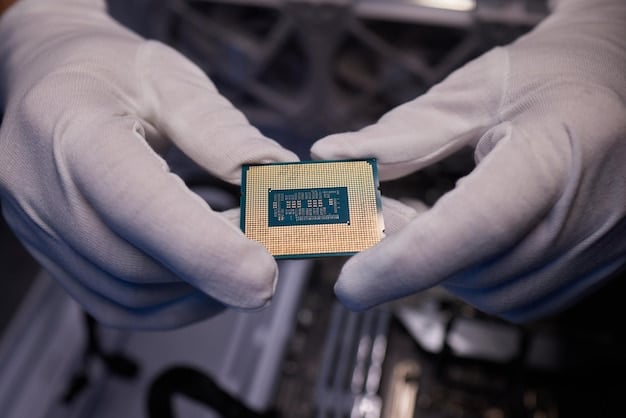
Key considerations for storage upgrades:
- NVMe SSD: Prioritize for your OS and frequently played games due to superior speed (check motherboard compatibility).
- SATA SSD: A cost-effective solution for larger game libraries if NVMe isn’t an option or for secondary game storage. Still vastly superior to HDDs.
- Capacity: 500GB-1TB NVMe is a good starting point for primary drive. Expand with larger SATA SSDs or HDDs.
- DRAM Cache: Look for SSDs with a DRAM cache, as they generally offer better sustained performance and longevity.
As games continues to grow in size, having ample, fast storage becomes increasingly important. While you might be tempted to save by sticking with an HDD, the improvement in system responsiveness and loading times an SSD provides is almost universally praised as one of the most impactful upgrades for any PC user, gamer or otherwise.
CPU Upgrade: When and How to Maximize Value
Upgrading your Central Processing Unit (CPU) can be one of the more complex and potentially costly budget-friendly endeavors, as it often necessitates a new motherboard and RAM if you’re switching platforms (e.g., from an older Intel socket to a newer AMD socket). However, if your current CPU is a significant bottleneck, a strategic upgrade can unlock the full potential of your other components, particularly your GPU. The key for 2025 is to identify when a CPU upgrade makes economic sense and how to execute it for maximum value.
Before considering a whole new platform, investigate if your existing motherboard supports a more powerful CPU within the same socket type. For example, if you have an older Intel i5 on a particular socket, a used i7 or i9 from the same generation that fits your current motherboard might offer a substantial performance boost without requiring a motherboard swap. This is often the most budget-friendly CPU upgrade path, albeit limited by the potential of your existing platform.
If a socket upgrade is unavoidable, the budget approach involves looking for CPU/motherboard bundles or previous-generation processors that have recently dropped in price. AMD’s Ryzen platform has historically offered excellent value and a longer socket lifespan, potentially allowing for future CPU upgrades without a motherboard swap. Intel also offers strong competitive options, often with robust stock coolers for their non-K series CPUs, saving on an aftermarket cooler.
Understanding CPU Tiers and Value
Modern CPUs are often categorized into tiers: entry-level, mid-range, and high-end. For budget gaming, the mid-range processors often provide the best performance per dollar. These CPUs are typically sufficient to avoid bottlenecking even strong mid-to-high-end GPUs, providing smooth framerates in most games. Avoid the temptation to buy a high-end CPU if a mid-range counterpart would perform similarly in your target games and resolution.
Consider these points for a value-driven CPU upgrade:
- Socket Compatibility: First, check if a better CPU from your existing socket generation is available on the used market.
- Platform Upgrade: If a new socket is necessary, look for affordable CPU/motherboard bundles or consider previous generation platforms that offer great value.
- Mid-Range Sweet Spot: Aim for mid-range processors (e.g., Intel i5 or AMD Ryzen 5 series) which often provide the best price/performance ratio for gaming.
- CPU Coolers: Factor in the cost of an aftermarket cooler if your chosen CPU doesn’t come with an adequate stock cooler.
A new CPU and motherboard will almost certainly require a fresh installation of Windows, which can be time-consuming. Factor this into your planning. When executed wisely, a CPU upgrade can breathe new life into an aging system and ensure your graphics card is working at its full potential, providing a noticeably smoother and more consistent gaming experience.
Peripherals and Accessories: Enhancing Experience Beyond Core Components
While core components like the GPU, CPU, RAM, and storage directly impact frame rates and loading times, your gaming experience is also profoundly shaped by your peripherals and accessories. Often overlooked in the pursuit of raw power, these items can offer significant quality-of-life improvements and competitive advantages for a relatively small investment, making them excellent budget-friendly upgrades in 2025.
A high refresh rate monitor (144Hz or higher) is arguably one of the most transformative upgrades for gamers transitioning from a standard 60Hz display. The difference in fluidity and responsiveness is immediately noticeable, making games feel significantly smoother and more immersive. While high-end monitors can be pricey, the market for affordable 1080p 144Hz monitors has matured, offering excellent value. If your GPU can consistently push frames above 60 FPS, a high refresh rate monitor is a worthwhile investment.
Beyond the display, a quality gaming mouse and keyboard can dramatically improve your interaction with games. Features like accurate sensors, programmable buttons, and comfortable ergonomics can give you an edge in competitive titles or simply make extended gaming sessions more enjoyable. There’s no need to buy the most expensive brands; many reputable manufacturers offer excellent budget-friendly options that deliver reliable performance and features.
Audio, Comfort, and Connectivity
Don’t underestimate the power of good audio. A decent gaming headset can provide clear communication with teammates and immerse you further into game worlds with spatial audio cues. Look for headsets that balance sound quality, microphone clarity, and comfort for long sessions. Similarly, an ergonomic chair or even a quality mouse pad can significantly improve comfort and reduce fatigue during marathon gaming sessions.
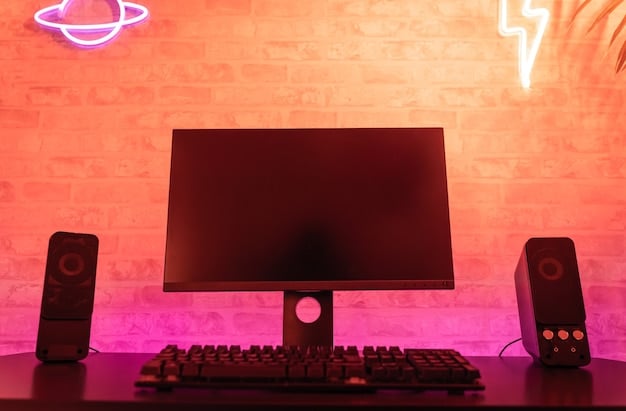
Key peripheral and accessory upgrades for a better gaming experience:
- High Refresh Rate Monitor: Improves visual fluidity and responsiveness (1080p 144Hz offers great value).
- Quality Gaming Mouse & Keyboard: Enhances precision, comfort, and can offer competitive advantages.
- Gaming Headset: Crucial for clear communication and immersive audio.
- Improved Cooling: Aftermarket CPU coolers or additional case fans can reduce temperatures, prevent throttling, and extend component lifespans.
- Router Upgrade: A faster, more reliable Wi-Fi 6 or 6E router can reduce lag and improve connection stability, especially for online gaming.
Even something as simple as ensuring your internet connection is robust can be considered an upgrade. Upgrading your router, switching to a wired Ethernet connection, or even contacting your ISP for higher bandwidth can significantly reduce lag and provide a smoother online gaming experience. These non-core component upgrades directly contribute to your overall satisfaction and often provide a better return on investment for convenience and immersion than marginal gains from strictly performance-focused hardware.
Maintenance and Optimization: Free Performance Boosts
Before reaching for your wallet, remember that some of the most effective “upgrades” cost absolutely nothing and involve system maintenance and software optimization. Neglecting these aspects can severely limit the performance of even high-end hardware. For budget-conscious gamers in 2025, maximizing what you already have through smart management is the first step towards a better gaming experience.
Regular cleaning of your PC’s internal components is crucial. Dust buildup acts as an insulator, trapping heat and causing components to run hotter, which can lead to thermal throttling – where components reduce their clock speed to prevent overheating, significantly impacting performance. Using compressed air to clear dust from CPU coolers, GPU heatsinks, and case fans can immediately lower temperatures and improve sustained performance. Ensure your cable management is tidy, allowing for better airflow within the case.
Software optimization is equally important. Ensure your operating system and graphics drivers are always up to date. NVIDIA, AMD, and Intel regularly release driver updates that include performance optimizations and bug fixes for popular games. Disabling unnecessary background applications, managing startup programs, and fine-tuning in-game graphics settings can free up system resources and lead to higher frame rates. Overclocking your CPU or GPU can also yield free performance gains, but this should only be attempted after thorough research and understanding the risks involved.
Leveraging Software and Settings
Even on a budget, you can fine-tune your software settings. Most modern games offer a wide range of graphical options. Learning to balance visual quality with performance can make a significant difference. For example, reducing shadow quality or anti-aliasing can often free up substantial frames per second without drastically impacting the overall visual experience. Utilities that come with your GPU drivers (e.g., NVIDIA GeForce Experience, AMD Radeon Software) often provide optimization suggestions tailored to your hardware.
Key maintenance and optimization practices:
- Physical Cleaning: Regularly clean dust from fans, heatsinks, and radiators to improve airflow and cooling.
- Driver Updates: Keep your GPU drivers and motherboard chipsets updated for the latest performance optimizations.
- OS Optimization: Disable unnecessary background apps, manage startup programs, and ensure Windows is running efficiently.
- In-Game Settings: Experiment with graphics settings to find the optimal balance between visual quality and frame rate for your specific hardware.
- Overclocking (Cautiously): Research and safely experiment with mild CPU/GPU overclocks for free performance boosts.
- Defragmentation (for HDDs): While less critical for SSDs, regularly defragmenting traditional HDDs can improve load times.
These free performance tweaks are often overlooked but can collectively provide a noticeable improvement in gaming performance and system stability. Before spending money, ensure you’ve squeezed every last drop of performance from your existing setup through smart maintenance and thoughtful optimization. This proactive approach not only saves money but also ensures that any future hardware upgrades are built upon a clean and efficient foundation.
Future-Proofing on a Budget: Smart Investments for Longevity
The concept of “future-proofing” in the rapidly evolving tech landscape can seem daunting, if not impossible, especially on a budget. However, it’s less about buying the most bleeding-edge components and more about making smart investments today that will provide a longer useful lifespan for your gaming rig, delaying the need for another expensive overhaul. This strategy for 2025 focuses on components that offer good longevity and upgrade paths.
One of the most effective long-term investments is a quality power supply unit (PSU) with ample wattage and a good efficiency rating. A higher wattage PSU (e.g., 750W-850W) provides headroom for future, more powerful components. An 80 PLUS Bronze or Gold rating indicates higher efficiency, which reduces waste heat and electricity bills. A reliable PSU can last through multiple builds, saving you from buying a new one every few years.
Another area is your PC case. Investing in a case with good airflow, plenty of fan mounts, and ample space for larger components (like longer GPUs or taller CPU coolers) provides flexibility for future upgrades. A well-designed case can improve component longevity by keeping temperatures down and can be reused across several generations of internal hardware.
Platform Choices and Modular Design
When considering a platform upgrade (CPU and motherboard), look for platforms that publicly commit to multi-generational socket support. AMD’s AM4 socket, for instance, supported several generations of Ryzen processors, allowing users to upgrade their CPU without changing their motherboard. While AM5 is a newer socket, understanding where manufacturers plan their future platform developments can help inform your decision.
Consider these factors for budget-conscious future-proofing:
- High-Quality PSU: A reliable, high-wattage (e.g., 750W+) PSU with an 80+ efficiency rating offers longevity and upgrade potential.
- Spacious & Airflow-Optimized Case: Allows for larger future components and better thermal performance, extending component life.
- Modular RAM: Start with two sticks (e.g., 2x8GB for 16GB total) of a commonly available RAM type (DDR4 3200MHz, or DDR5 for new builds) leaving two slots open for future upgrades to 32GB or more.
- M.2 NVMe Slots: Ensure your motherboard has multiple M.2 slots for easy and cost-effective storage expansion.
- Avoid Overspending on Niche Features: Focus on core performance and widely adopted technologies, not on features that might quickly become obsolete.
Finally, think about modularity. Choosing a motherboard with multiple M.2 slots for NVMe SSDs, or a power supply with modular cables (which simplifies cable management and airflow) adds convenience and flexibility for future upgrades. While true “future-proofing” is a myth, making informed choices that extend the relevancy and upgrade potential of your current system is the best budget-friendly strategy in 2025.
| Key Upgrade Area | Budget Focus |
|---|---|
| 🚀 GPU | Previous-gen flagships or current-gen mid-range for best perf/dollar. |
| 💾 RAM | 16GB minimum, matching existing sticks for dual-channel. |
| ⚡ Storage | NVMe SSD for OS/games, secondary SATA SSD for large storage. |
| 💻 CPU | Look for same-socket compatible or mid-range platform bundles. |
Frequently Asked Questions on Budget Gaming Upgrades
▼
For most gaming setups, upgrading the Graphics Processing Unit (GPU) typically provides the most significant performance boost. A better GPU allows for higher frame rates, improved graphical settings, and a more immersive gaming experience, even without changing other components extensively. Always prioritize balancing your GPU with your CPU to avoid bottlenecks.
▼
Yes, 16GB of RAM remains the sweet spot for most gaming scenarios in 2025, offering sufficient memory for the vast majority of modern titles. While 32GB can provide a small edge for extreme multitasking or certain memory-intensive applications, it’s generally not a crucial upgrade for pure gaming performance on a budget, making 16GB an excellent value choice.
▼
An SSD (Solid State Drive), especially an NVMe, will drastically improve system responsiveness, boot times, and game loading speeds. If you’re still on a traditional HDD, an SSD is a transformative upgrade. A CPU upgrade is more critical if your current processor is clearly bottlenecking your GPU, causing low frame rates despite a capable graphics card. Prioritize based on your specific system’s weakest link.
▼
Buying used components can offer incredible value, especially for GPUs and CPUs. However, it comes with risks. Purchase from reputable sellers, ask for benchmarks and clear photos, and use platforms with buyer protection. Be wary of deals that seem too good to be true. Used hardware can be a great budget option if you exercise due diligence and caution to ensure reliability.
▼
Plenty of non-hardware “upgrades” cost nothing! Regularly cleaning your PC for dust, keeping graphics drivers updated, optimizing in-game settings for performance, disabling background applications, and ensuring a stable internet connection (preferably wired Ethernet) can significantly enhance your gaming experience. These steps ensure your existing hardware performs at its peak without additional financial outlay.
Conclusion
Navigating the world of gaming hardware upgrades in 2025 doesn’t demand an unlimited budget. By adopting a strategic and analytical approach – identifying bottlenecks, prioritizing components that offer the best performance-to-price ratio, and leveraging smart buying choices like previous-generation hardware or the used market – you can significantly enhance your gaming experience without overspending. Remember that effective maintenance and software optimization are also invaluable, offering free performance boosts that complement any hardware investment. With these insights, a powerful and enjoyable gaming rig is well within reach for every budget-conscious enthusiast.
